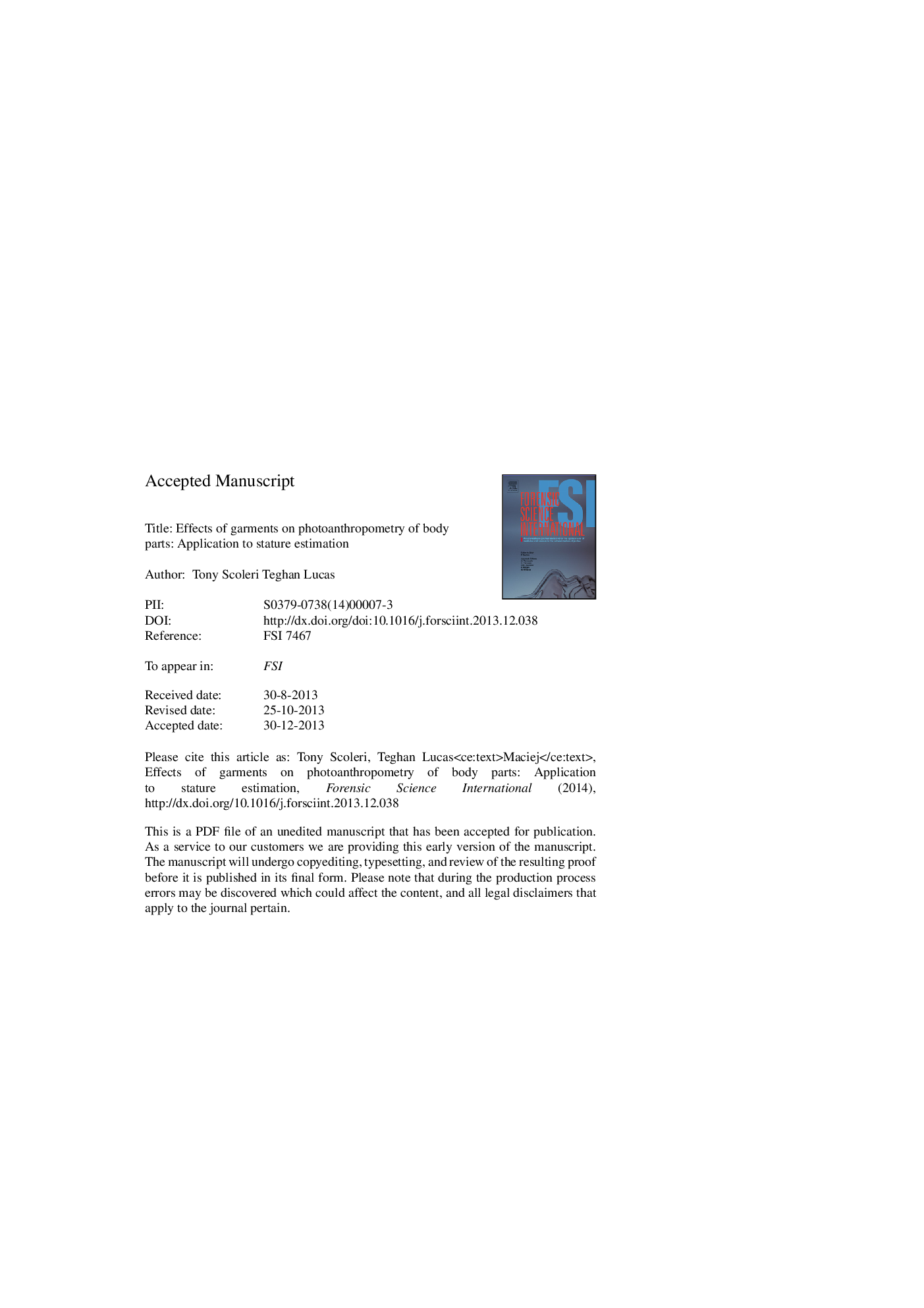| Article ID | Journal | Published Year | Pages | File Type |
|---|---|---|---|---|
| 95797 | Forensic Science International | 2014 | 34 Pages |
Abstract
Person identification from images is an important task in many security applications and forensic investigations. The essence of the problem comes down to measuring key observable anatomical features which can help describing similarities or differences between two or more individuals. In this paper, we examine how different types of garments affect the placement of body markers that enable precise anatomical human description. We focus in particular on landmark positioning errors on the upper limb. Closed-form formulae are provided to compute the maximum likelihood estimate of upper limb length from an image. Subject stature is then predicted from the limb length through a regression model and used as identification criterion. Following initial laboratory experiments, the technique is demonstrated to be invariant to posture and applicable to uninformed subjects in unconstrained environments. Seven technical errors of measurement and statistical tests are quantified empirically from statures obtained by three assessors. Results show that thicker garments produce higher inaccuracies in landmark localisation but errors decrease as placement is repeated, as expected. Overall, comparison to truth reveals that on average statures are predicted with accuracy in excess of 96% for the worst assessor.
Related Topics
Physical Sciences and Engineering
Chemistry
Analytical Chemistry
Authors
Tony Scoleri, Teghan Lucas, Maciej Henneberg,
